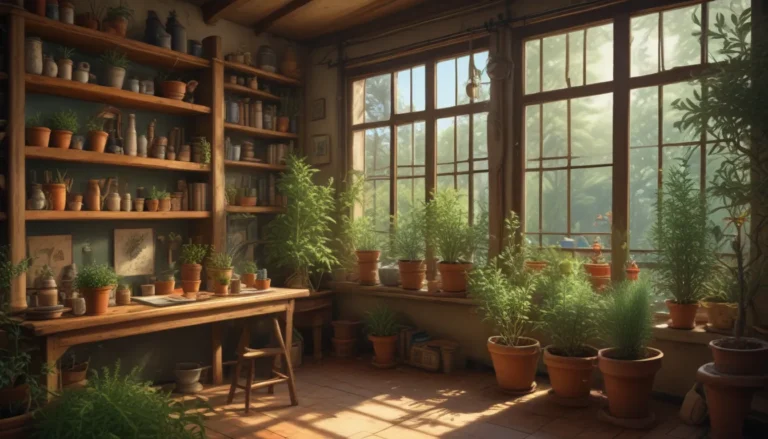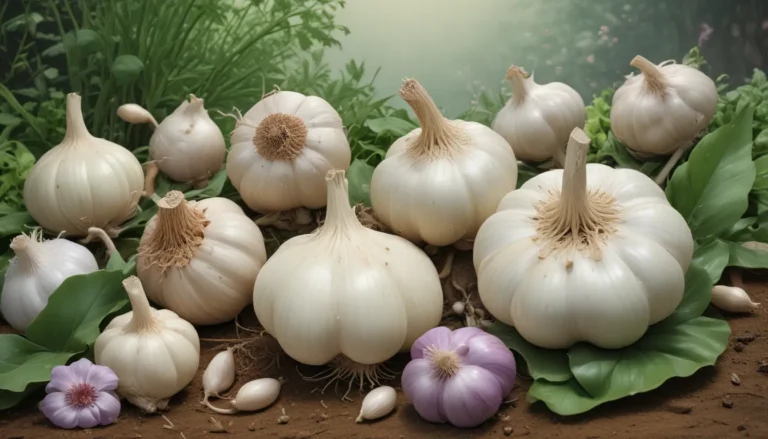The Ultimate Guide to Growing Bay Laurel in Containers

If you are an ornamental grower or an herb gardener, then bay laurel is the plant for you. Not only does it add beauty to your garden, but it is also an essential ingredient in many dishes. Whether you want to grow bay in containers on your patio, create elegant topiaries, or maximize limited space, bay laurel is the perfect solution. In this in-depth article, we will explore everything you need to know about growing bay laurel in containers.
What You’ll Learn
- Choosing a Container
- Varieties to Select
- Planting
- Container Care
- Troubleshooting Tips
Container gardening is a favorite of many because it allows flexibility and easy access to herbs when cooking. Laurus nobilis, commonly known as bay laurel, is a versatile plant that can thrive in containers. Let’s dive into the details of how to successfully grow bay laurel in containers.
Choosing a Container
When selecting a container for your bay laurel plant, it’s essential to prioritize drainage. Bay laurel can tolerate crowded roots but cannot handle excessive moisture. Ensure that your container has a drainage hole for every 12 square inches of surface area to prevent waterlogging.
While the material of the container is not as crucial, unglazed terra-cotta pots are preferred in regions with abundant rainfall due to their faster drying nature. The size of the container depends on the desired size of your bay laurel. For a mature tree of five to six feet, a 24-inch pot is suitable. Conversely, a six-inch bonsai pot can keep the plant pruned to under a foot tall.
If you live in a colder climate, consider whether you can bring the container indoors during winter. Opt for a manageable size like a seven-gallon pot that is 14 inches in diameter for ease of movement. Remember to choose a container that can support the weight and size of your plant to prevent tipping.
Varieties to Select
Bay laurel is a slow-growing plant that responds well to pruning, making it suitable for various containers. Here are some popular cultivars for container growth:
- Angustifolia: Also known as Willow Leaf Bay, this compact cultivar stays under 20 feet tall, with leaves resembling those of a willow tree.
- Aurea: Golden Bay, reaching about 30 feet tall, has striking golden-yellow leaves ideal for container display.
- Crispa: The Wavy Bay variety grows up to 15 feet and features undulating leaves that add texture to a potted herb garden.
Planting
Whether starting from seed, transplant, or cutting, the first step is to ensure a clean container. Use a diluted bleach solution to clean the container before planting. Choose a location with full or partial sun for at least five hours daily if growing outdoors. Indoors, place the plant by a bright, south or southwestern-facing window.
Fill the container with well-draining soil, such as a mix of cactus mix and all-purpose potting soil. Add bone meal or fertilizer for container plants as per manufacturer instructions. Plant the seedlings or transplant, ensuring space for growth. Consider companion planting with herbs like sage or rosemary for mutual benefits.
Container Care
Proper watering is crucial for bay laurel in containers. Allow the top inch or two of soil to dry between waterings to prevent root rot. Fertilize every two months during the growing season with a high-nitrogen fertilizer suitable for containers. Consider using fish and seaweed fertilizer for outdoor plants and a slow-release option for indoor plants.
During winter or in colder climates, acclimate the plant gradually before bringing it indoors. Water sparingly if kept in a cool location with limited light, while regular watering is required in warm, sunny spots. Prune regularly to maintain shape and size, trimming no more than 1/4 of the foliage at a time.
Troubleshooting Tips
Common issues with container-grown bay laurel include nutrient deficiencies and poor drainage. Address yellowing leaves or stunted growth by ensuring proper drainage and fertilization. Indoor plants may face aphids or spider mites infestations, which can be managed with neem oil and regular monitoring.
In conclusion, bay laurel is an ideal container plant that offers beauty, flavor, and versatility. Whether for cooking or aesthetic purposes, growing bay laurel in containers is a rewarding experience. Use the tips and guidelines provided in this comprehensive guide to ensure successful cultivation of bay laurel in your home or garden. Share your experiences with us as you embark on this exciting journey of growing bay laurel in containers. Happy gardening!





